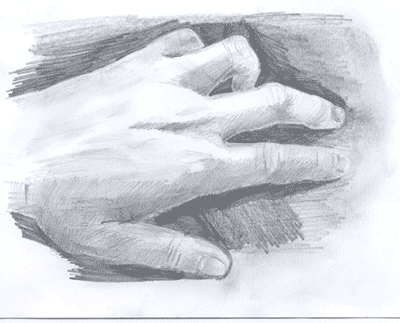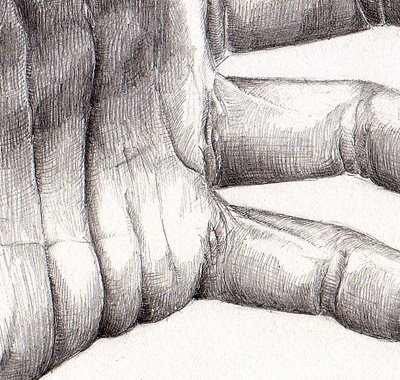As I mentioned in class Thursday, I will be extending extra credit opportunities to each student who is desirous. There have been a few modifications to the 3 options that I presented in class.
You can only choose ONE of the options listed below for a maximum addition of 10 points added to your year end average.
Extra Credit Option #1: Sketchbook extra credit. You can earn 1/2 point for every page that you fill with sketches (a page has a front AND a back) . To get the maximum 10 points for this option you'll have to fill 20 full pages. Because this is extra credit I will decide whether the sketch is acceptable for the extra credit. You can sketch anything you want; landscapes, people, pets, objects, ideas, personal creations, etc. Tip: Use your sketchbook to draw out your ideas for future class projects. These can count toward your extra credit if they are high quality. Also, come to me with your sketches throughout the year and I will tell you whether it is good enough for the extra credit or not. This way you won't have to wonder whether you'll get the max. 10 points or not.
Extra Credit Option #2: Visit the Montgomery Museum of Fine Art and write a 2 page report on any current exhibition. (For exhibition dates and details click here. ) Double space, 12pt font, name and date in top corner, and creative title must be included. Give your opinion of the exhibit that you chose. It can be a positive or negative opinion, but you must explain why you formed that opinion. Use art terms that we have gone over this year to describe the exhibit. Pick a piece of art in the exhibit that you felt was the most successful and give a detailed visual description, including the artist's name, background, title of the piece of art, the dates it was created and what you think the purpose/significance of that piece is. Include your feelings as much as possible; how did the exhibit affect you? what did it make you feel/think about? were you inspired? was there a particular emotion that you experienced such as sadness or peace?
A well written and thorough paper will earn you 10pts to your final class average.
Extra Credit Option #3: Write a 3 page paper (double-spaced, 12pt font) on an artist of your choice. The artist that you'd like to write about MUST BE APPROVED before you start so bring me your ideas and I will help you out on some source material. In this paper you should give a brief, 1-2 paragraph background on the artist - when&where s/he was born, influences on his/her art, awards, historical significance, educational degrees, etc. Then compare and contrast 2 artworks by the artist. Give detailed visual descriptions of the 2 artworks, similarities, differences, and in what ways they are successful or unsuccessful. Include your likes, dislikes and opinions - even if they are strong. You must include at least 3 sources listed on a "works cited" page attached to the back of your paper. Include printouts of the 2 artworks that you chose to discuss and attach them to the back of the paper as well.
You can only choose ONE of the options listed below for a maximum addition of 10 points added to your year end average.
Extra Credit Option #1: Sketchbook extra credit. You can earn 1/2 point for every page that you fill with sketches (a page has a front AND a back) . To get the maximum 10 points for this option you'll have to fill 20 full pages. Because this is extra credit I will decide whether the sketch is acceptable for the extra credit. You can sketch anything you want; landscapes, people, pets, objects, ideas, personal creations, etc. Tip: Use your sketchbook to draw out your ideas for future class projects. These can count toward your extra credit if they are high quality. Also, come to me with your sketches throughout the year and I will tell you whether it is good enough for the extra credit or not. This way you won't have to wonder whether you'll get the max. 10 points or not.
Extra Credit Option #2: Visit the Montgomery Museum of Fine Art and write a 2 page report on any current exhibition. (For exhibition dates and details click here. ) Double space, 12pt font, name and date in top corner, and creative title must be included. Give your opinion of the exhibit that you chose. It can be a positive or negative opinion, but you must explain why you formed that opinion. Use art terms that we have gone over this year to describe the exhibit. Pick a piece of art in the exhibit that you felt was the most successful and give a detailed visual description, including the artist's name, background, title of the piece of art, the dates it was created and what you think the purpose/significance of that piece is. Include your feelings as much as possible; how did the exhibit affect you? what did it make you feel/think about? were you inspired? was there a particular emotion that you experienced such as sadness or peace?
A well written and thorough paper will earn you 10pts to your final class average.
Extra Credit Option #3: Write a 3 page paper (double-spaced, 12pt font) on an artist of your choice. The artist that you'd like to write about MUST BE APPROVED before you start so bring me your ideas and I will help you out on some source material. In this paper you should give a brief, 1-2 paragraph background on the artist - when&where s/he was born, influences on his/her art, awards, historical significance, educational degrees, etc. Then compare and contrast 2 artworks by the artist. Give detailed visual descriptions of the 2 artworks, similarities, differences, and in what ways they are successful or unsuccessful. Include your likes, dislikes and opinions - even if they are strong. You must include at least 3 sources listed on a "works cited" page attached to the back of your paper. Include printouts of the 2 artworks that you chose to discuss and attach them to the back of the paper as well.






